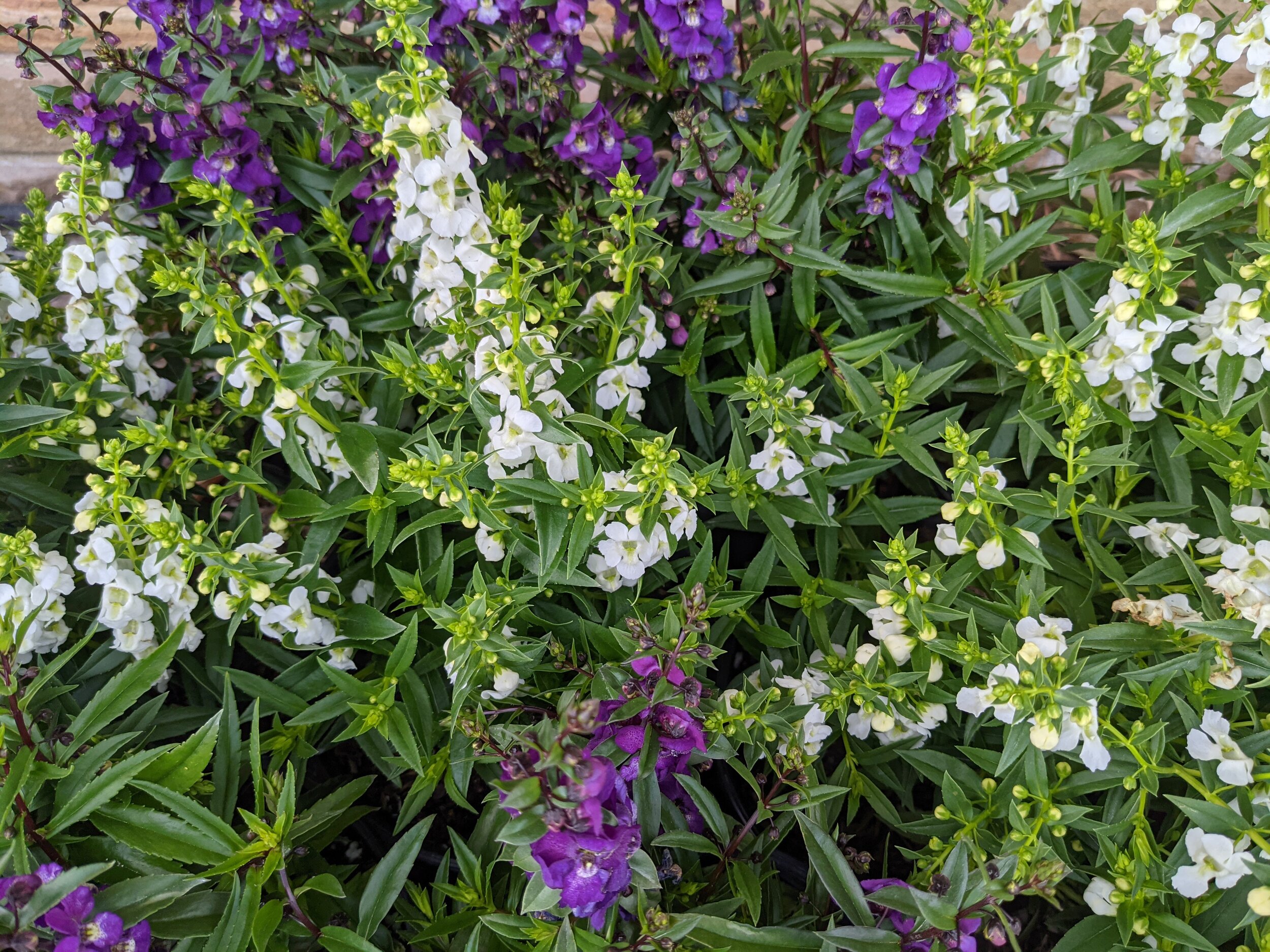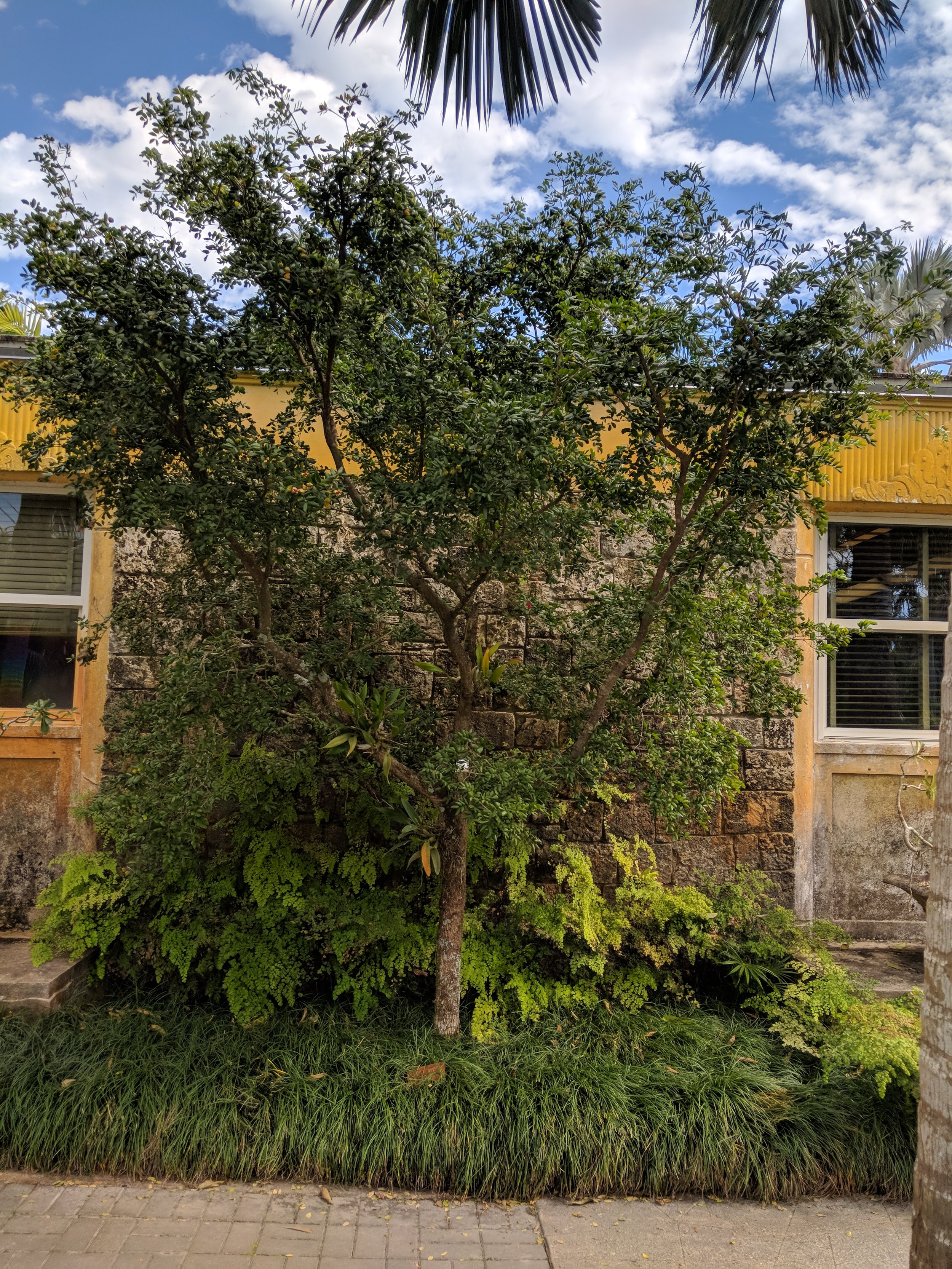Plants are autrophs—”self-feeders” because they convert certain inorganic elements such as carbon, oxygen, sulfur, etc. to organic forms for its own consumption. Leaves and some stems contain Chlorophyll…
Read MoreAngelonia angustifolia. Photo Credits: Building Center No.3
Get to Know Your Florida Plant - Angelonia angustifolia [04]
If you want a touch of color and a low maintenance plant in your garden, the Angelonia angustifolia is ideal. This plant will bloom all year round, attracting butterflies and different pollinators to the garden.
Read MoreGet To Know Your Florida Plant - Pigeon Plum [03]
Pigeon Plum - This native Florida tree is medium sized but can also grown as a sturdy multi-stemmed shrub with low branches (good for privacy hedges). In nurseries the plant can be trained to have a single straight stem (which is our preference). The tree attracts birds on the account of its small pear shaped, dark red/purple fruit (ripening in late fall and early winter); Coccoloba means “lobed berry” in Latin.
The plant is dioecious with flowers varying in gender from one individual to the next. Flowering peaks in spring and summer. An interesting characteristic of the species is its flaky, peeling bark; revealing blotchy shades of color (similar to Gumbo Limbo and Simson Stopper).
We like the tree because it is native, salt and drought tolerant. The leaves are broad full creating dense foliage and good canopy characteristics. When the trees are planted lining a street or edge condition the color variation in the flaking bark creates an interesting textural dimension to the scene.
Get To Know Your Florida Plant [02]: Lignum vitae
Guaiacum Sanctum - Lignum vitae, "Tree of Life" is commonly cited as an endangered plant species in South Florida. We couldn't find the plant on any endangered species list but we accepted the general consensus and sought to do our small part to reestablish it in one of our projects, Broward Specialty Center. Part of the landscape concept for this project is "Discovery and Continuity" so we specified six Lignum vitae in the project as the "discovery" part of the concept. We placed them in areas where the architecture is less interesting and could benefit from the vibrant periwinkle colors when the tree is blooming in spring and summer.
The tree's characteristics are: drought and salt tolerance, slow growing (which we don't like) dense, hard wood that is decay and pest resistant. We visited this plant at the Miami Beach Botanical Garden and Fairchild Botanical Gardens and the specimens we saw were 8-12 feet tall.
Reestablishing this plant in the State's landscape will happen one project at a time--and will take local homeowners planting one or two in their own yards. Start by downloading our data sheet on the plant.
Get to know your Florida plants (01)
Sea grapes can be found all over South Florida; the leaves are tough and thick but have lovely unique shape. The fruit are edible and make good preserves--they are also popular with birds and squirrels. The tree is salt tolerant; we have often seen along the water's edge near bays and rivers. The white flowers are fragrant and very small. If you would like to know more about this plant follow the link below to download the full description.
Get to know your Florida plants (01)
Color and a low maintenance plant in the garden is always desirable, the Angelonia angustifolia is an ideal addition. This plant will bloom all year round, attracting butterflies and different pollinators to the garden. If you would like to know more about this plant follow the link below to download the full description.
Introduction: Get to know your Florida plants series
Frequency: Every 4-6 weeks
BC3 is interested in preserving and improving the quality of our environment, and understands the importance of South Florida Landscapes. Native plants are not only beautiful, but low maintenance and easy to grow.
Why Native?
Preserving our ecology is not only a matter of preserving nature, it is a matter of preserving our future, of being aware of our surroundings and understanding that every action has consequences. South Florida has one of the most unique ecosystems, yet it is the most endangered of North America. It is estimated that no more than two percent of the original ecosystem is truly intact.
Ok, what can I do?
Plant friendly! Selecting the right planting material could enhance our overall environment. You will be contributing to the improvement of our region with the simple act of planting a native.
The Case for Rainwater Harvesting in Miami and South Florida
Miami averages 61 inches (155 cm) of rainfall each year. Given the high demand for water in our region there is an opportunity for rainwater harvesting to benefit the environment and reduce the water bills for residential and commercial consumers.
Read More




